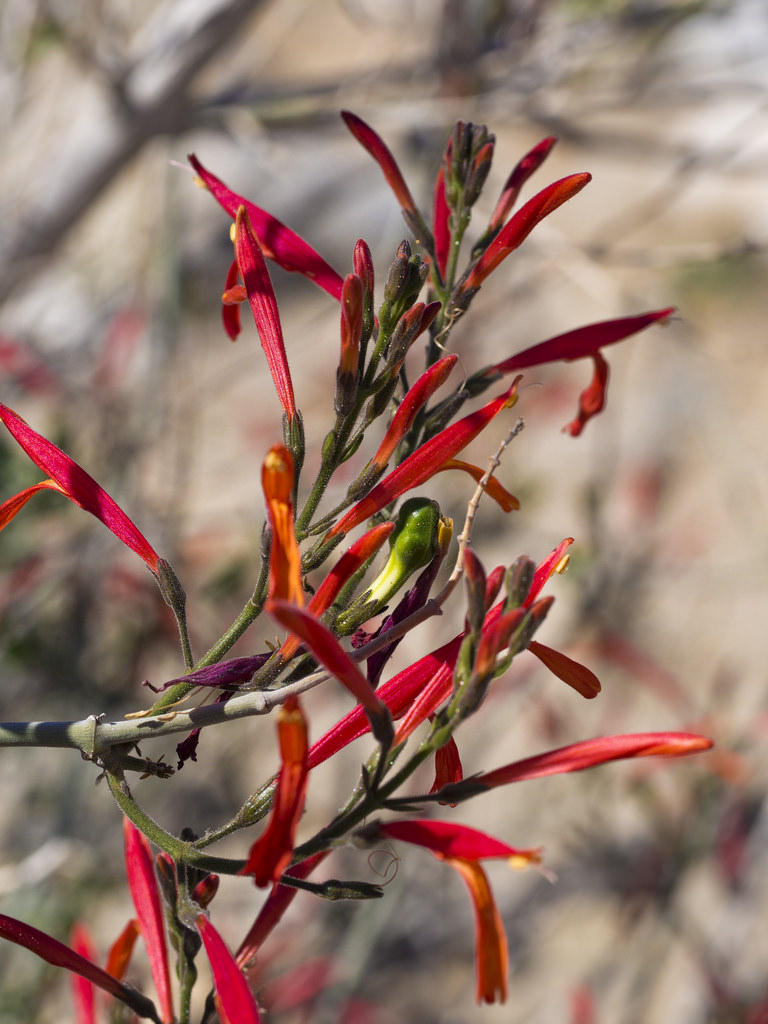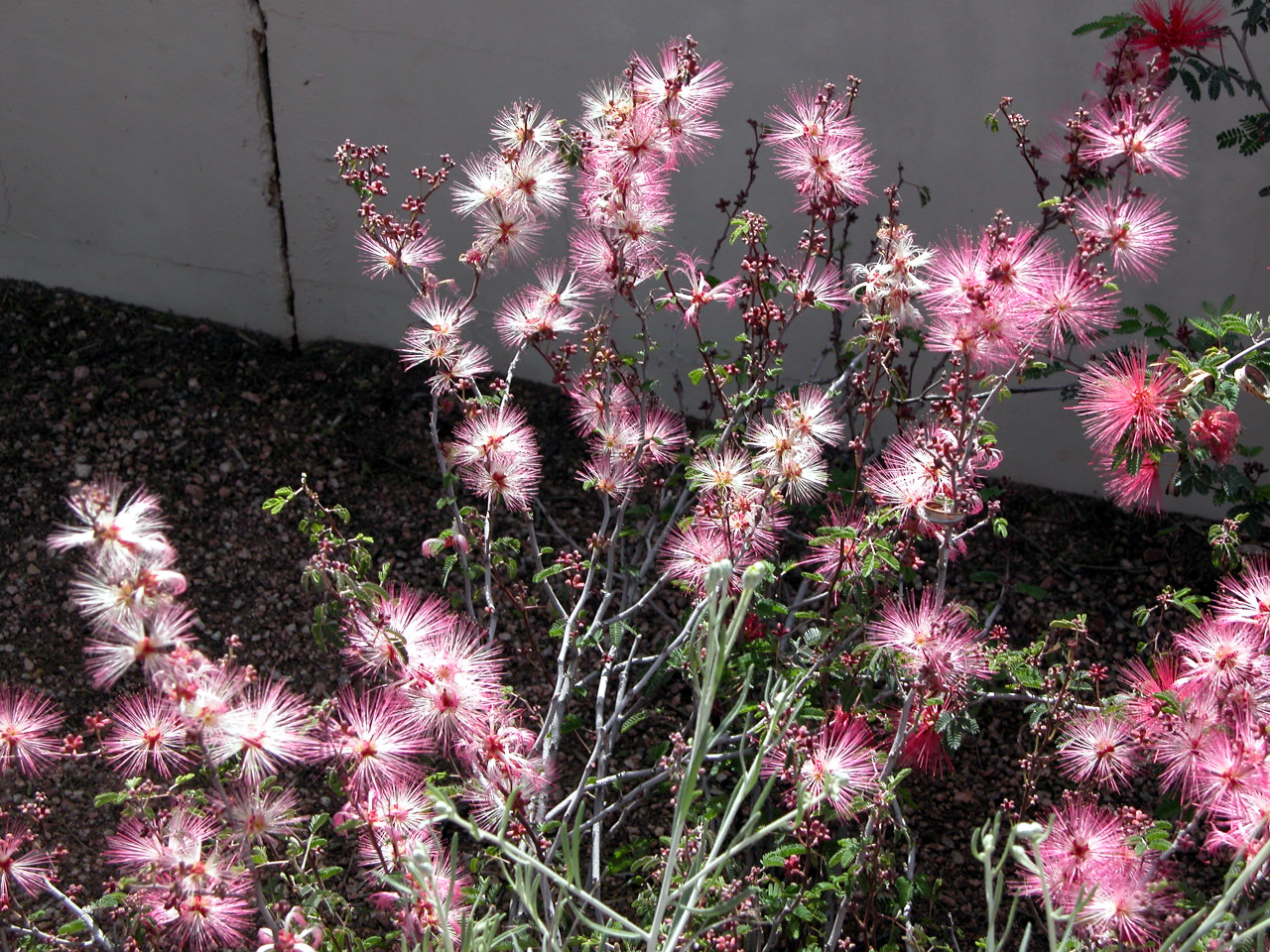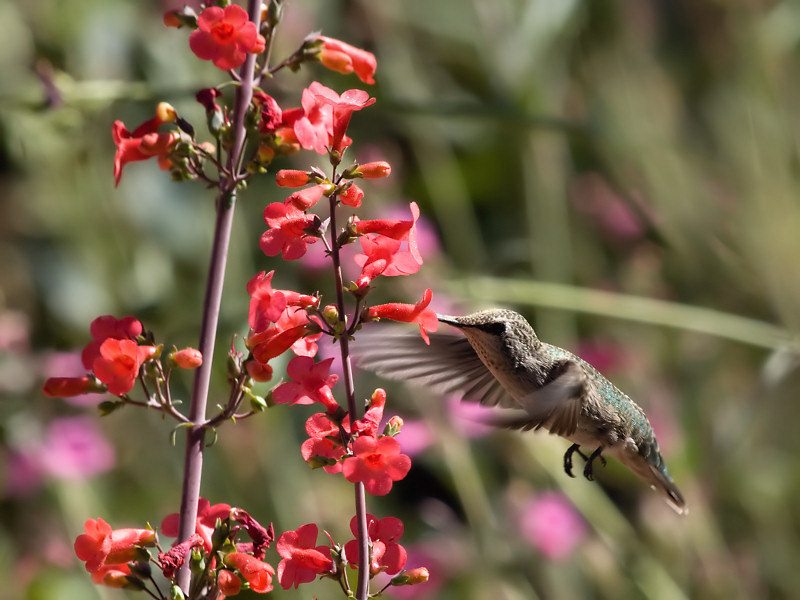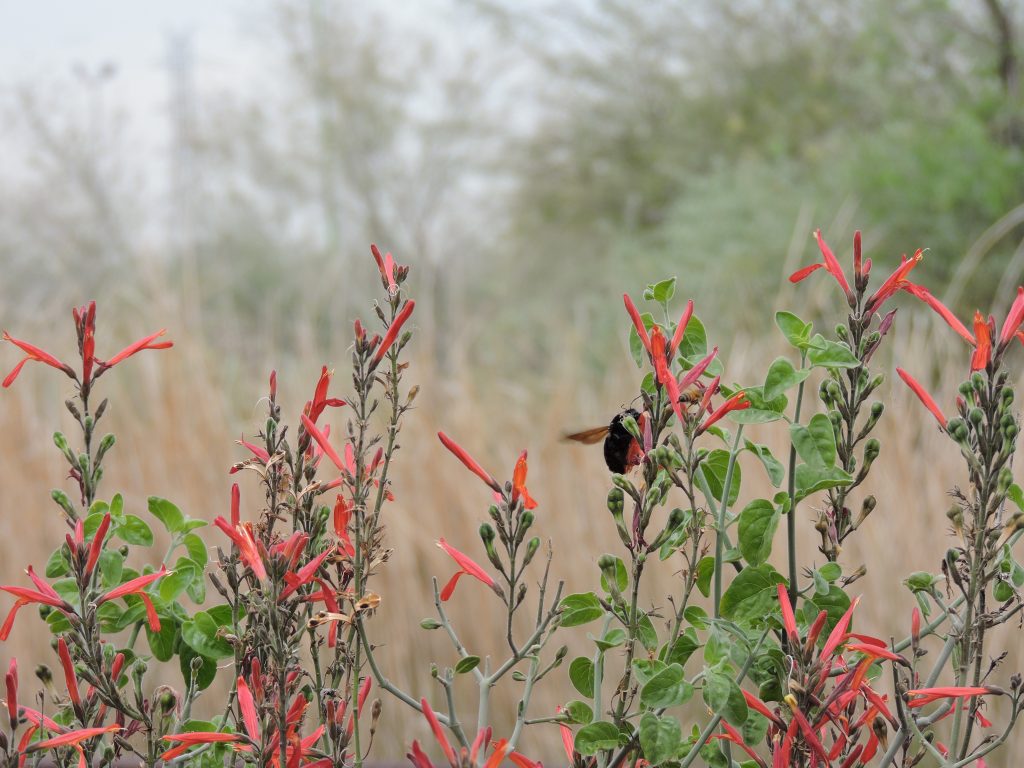Feeling like your yard is too small to plant for birds? Before you throw in the towel, give these petite garden favorites a try. Like goldfish, these plants will fill the space they are given and can be trimmed back easily if needed. Endorsed by gardeners and hummingbirds alike, these easy additions will add more life and interest to your small space than you currently believe possible. As you’d expect, small spaces are best for small birds—hummingbirds– so the bird-friendly desert plants suggested here are hummer favorites. If your space allows, add some tall native shrubs to encourage feathered visitors to stick around and perch or preen. A water source like a small, shallow bird bath is also a good bet, but make sure that your space is free of marauding cats.

Chuparosa (Justicia californica)
The quintessential southwestern hummingbird plant has a bad reputation for being rangy and wild-looking. To encourage a bushier, stouter appearance, you can prune it gently into a soft mound. One of the most endearing of Chuparosa’s qualities is that it blooms in late winter when little else is available, thereby enjoying a corner on the hummingbird market.
Gardeners attest that Chuparosa’s profuse, lipstick-like blooms chase away the winter blahs like little else, all the while providing our feathered friends with needed nutrition. You can get away with planting Chuparosa in a very large planter, but it much prefers to be planted in soil.
Pink Fairy Duster (Calliandra eriophylla)
Literally a-buzz with insect activity, the feathery leaves and weird, airy blooms of our native Pink Fairy Duster provide an overall open effect in the garden. Like the Chuparosa, many gardeners choose to trim this character into a tighter, denser version of itself. Whatever your preference, these long-suffering survivors can be planted fairly densely for a low screen effect. Deciduous in much of its range, the Fairy Duster’s burst to life in early spring reminds desert dwellers that four seasons DO indeed exist, we are not just limited to withering heat punctuated by a few frigid days. Seed pods are interesting affairs that split cleanly open then curl back on themselves and remain affixed to branches for quite some time. Fairy Duster becomes quite woody after its first year, thereby serving double-duty for hummers as both a fueling station and a perching place.

Parry’s Penstemon (Penstemon parryi)
The desert southwest is blessed with many species of penstemon, however one of the easiest to find and to grow is Parry’s Penstemon. Self-seeding to an almost annoying degree, Penstemon is a no-fuss showboat that can tolerate poor soils and hot sun, only to spit back eye-popping blooms. Flower stalks bust from the ground like Athena from Zeus’ head and can grow 3-4 feet: it’s definitely a back row plant in small gardens. Count on Penstemon blooms to start in late spring and show up again (to a lesser degree) after monsoon rain in late summer. Between shows, Penstemon stems should be cut back, leaving a low, unremarkable plant to lay forgotten, like a starfish on the ocean floor. Given this seasonality, try to intersperse other plants in with the Penstemon. Good choices include Desert Marigold and Indian Blanket—both will bloom into mid-summer to early fall and provide resources for our “other” pollinators, the bees and butterflies.

For more Plants for Birds, check out National Audubon’s free searchable database that provides suggestions based on your zip code. Another good bet is Audubon AZ’s Top 10 Bird-friendly Plants in Central AZ. Happy Planting!
Did you know that up to 70 percent of water use is outdoors? That’s why we love desert plants and feature them each month. It’s a great time to plant, and you can learn more about desert plants on our Arizona Low-Water-Use Plants page. Visit our page on Choosing and Planting Low Water-Use Plants for tips on plant selection and how to plant properly. Also, be sure to read through all of our featured Plant of the Month blogs!
Four hand-picked articles to read next:
- Plant of the Month: Desert Hackberry | Plants for Birds – Part 1
- Plant of the Month: Chuparosa | Plants for Birds – Part 2
- Plant of the Month: Ironwood — The Desert’s Oldest Nurse | Plants for Birds – Part 3
- Is It Time to Turn Your Yard into a Wildflife habitat?
Water – Use It Wisely is proud to feature guest bloggers who write about topics related to water and water conservation. The author of this blog post, Cathy Wise, is the education director with Audubon Arizona, whose mission is to protect birds and the places they need, today and tomorrow, using science, advocacy, education, and on-the-ground conservation.
Photographer Steve Prager, an important bird area program associate & teacher/naturalist with Audubon Arizona.


